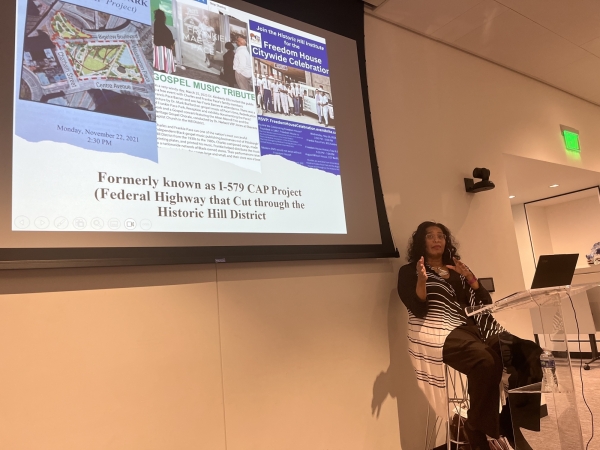EDI Event - Tulsa, Transportation, and Tragedy: How Modes of Transportation Affected the Tulsa Massacre
By Audra Bandy
For many communities, June is a time of celebration and reflection. On June 23, 2024, several days after Juneteenth, the DC Chapter paid tribute to the past and celebrated the future by hosting a presentation titled Tulsa, Transportation, and Tragedy: How Modes of Transportation Affected the Tulsa Massacre.
Dr. Kimberly Ellis, a scholar of American and Africana Studies, and a lead historian and storyteller in The History Channel’s "Tulsa Burning" documentary, spoke about the worst case of domestic terrorism in United States' history. She discussed the Tulsa Race Riot, War, and Massacre of 1921, with a particular lens on transportation modes and policies which contributed to the demise of Tulsa’s Greenwood business and residential community and how today, more than a century later, legislation and legal strategies could right some of the wrong.

The history of the Greenwood neighborhood and the effects of the massacre reached beyond Tulsa. Aspects of this unresolved case can be seen throughout the country in transportation and planning decisions that have had long-lasting effects. Neighborhoods remain separated by past practices like redlining, railroad tracks that divided towns, and highways that split neighborhoods. However, programs like the Reconnecting Communities and Neighborhood Grant Program, which includes the Neighborhood Access and Equity (NAE) Program and the Reconnecting Communities Pilot Program (RCP), aim to reconnect communities that are cut off from opportunity and burdened by past transportation infrastructure decisions. These types of initiatives are addressing some of the harm that continues to impact current and former residents.
After the presentation, attendees were given the opportunity to spend the afternoon touring the National Museum of African American History and Culture. The remainder of the day was spent sharing a meal with Dr. Ellis at the Sweet Home Cafe and walking through the cultural exhibitions. Of particular note, the museum's exhibition on the African American community of Greenwood, colloquially known as "Black Wall Street", showcased many of the items and firsthand accounts discussed by Dr. Ellis.